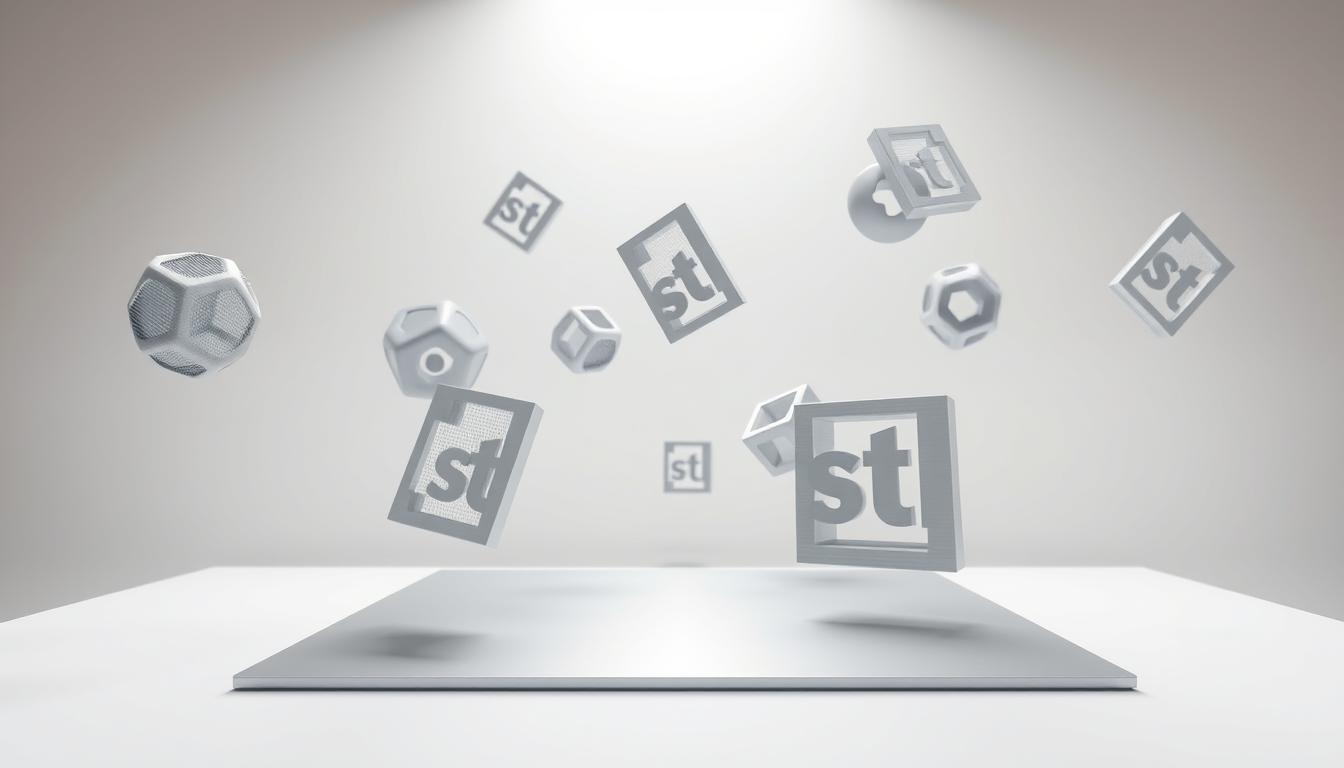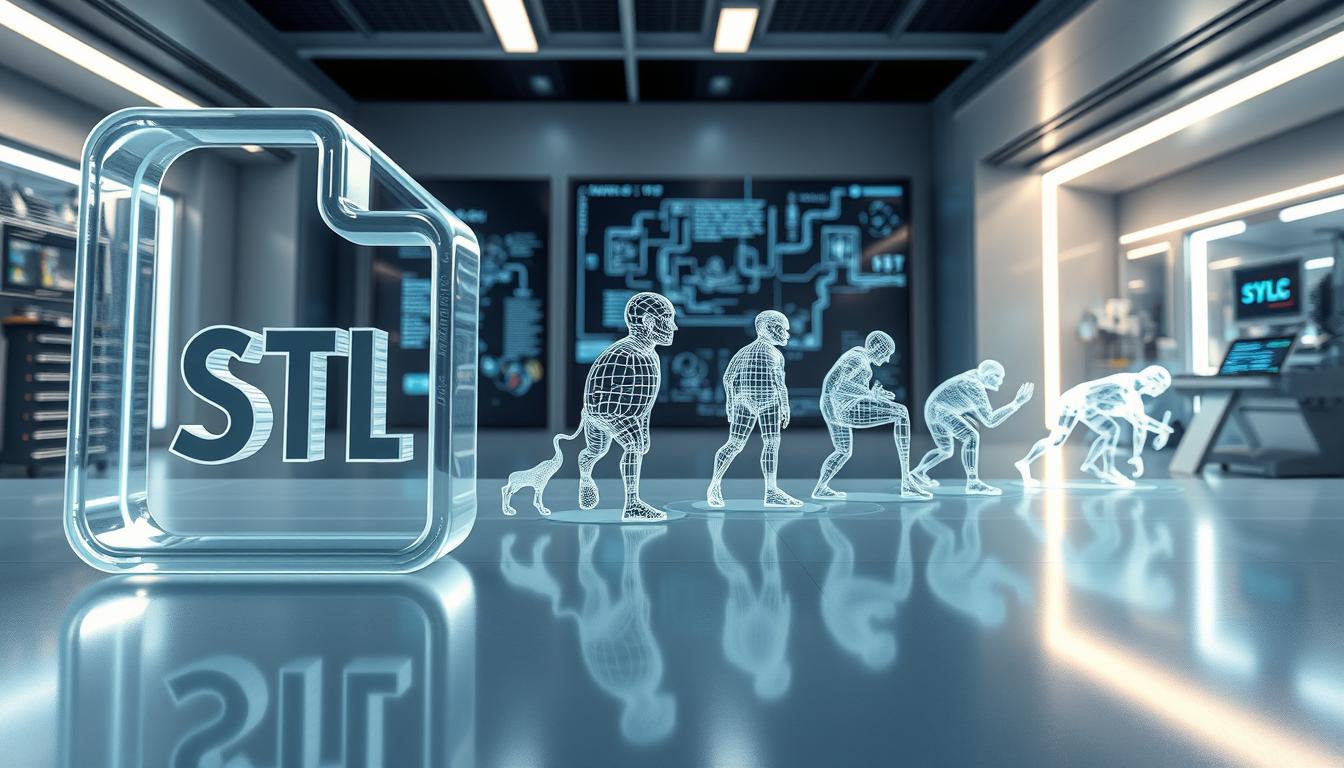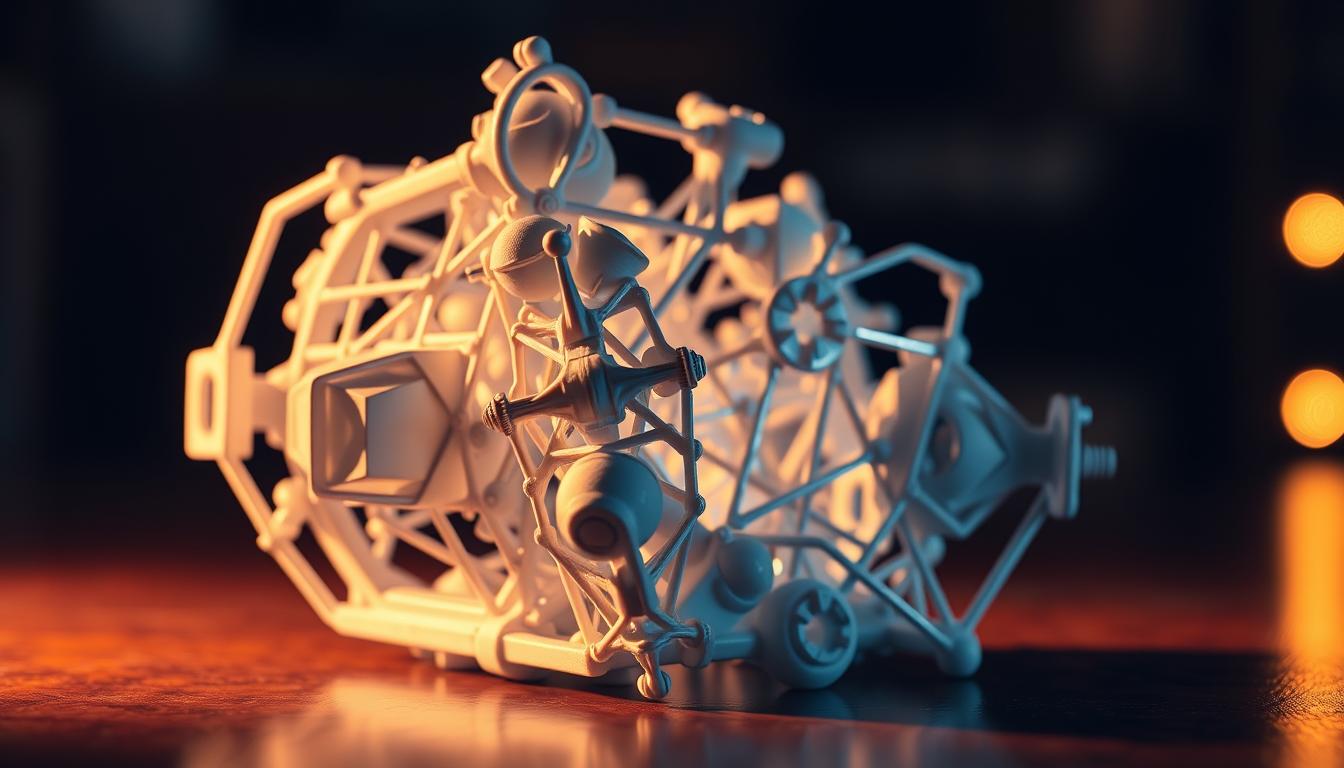Understanding .stl Files: Uses & Benefits
The world of 3D printing has changed a lot with .stl files. They are key in additive manufacturing. .stl files help show 3D objects in a simple way. This makes them smaller and easier to use.
They work well with many slicer programs. This makes it easier to go from digital to real.
We will look at .stl files in this article. We will talk about their history, uses, and benefits. We will also talk about their limits and how to fix them for 3D printing. By the end, you will know a lot about .stl files and their role in 3D printing.

Key Takeaways
- .stl files are the most common file format used in 3D printing.
- They are favored for their universal compatibility with slicer programs.
- File sizes of .stl files are generally smaller due to their focus on surface geometry alone.
- Modern 3D printing often also employs formats like OBJ, AMF, and 3MF for more complex needs.
- Understanding .stl files is crucial for optimizing 3D printing processes across various industries.
What are .stl Files?
.stl files, short for Standard Tessellation Language, are key in 3D modeling and printing. They were created by 3D Systems in 1987. These files show the surface of a 3D object using triangles.
More complex designs need more triangles. This makes the file bigger.
.stl files work well with many 3D printers and CAD software. They are easy to use for making prototypes and products. But, they don't show color or texture.
Each triangle in an .stl file is made of 12 numbers. This makes each triangle about 50 bytes in binary format. The binary format is smaller and easier to handle.
| File Type | Size | Hexadecimal Representation |
|---|---|---|
| Binary .stl | More compact | Used for most applications |
| ASCII .stl | Larger size | Easier for manual editing |
.stl files are very useful in rapid prototyping. They make 3D printing easier. But, they don't include size information, which can cause problems.
Despite this, .stl files are very important. They are a key part of stereolithography.
Click to Watch Video Tutorial
History and Development of .stl Files
The history of .stl files started in 1987. 3D Systems introduced this format with their stereolithography technology. This was a big step in 3D printing.
Even though it's old, the format hasn't changed much. It uses triangles to show the shape of 3D objects.
STL files have become very popular over time. By 2019, they were key in 3D scanning, making prototypes fast, and in computer-aided manufacturing. Most 3D scanning tools work with STL files.
Windows and Mac can also handle STL files. This makes it easier for people to use them.

| Year | Milestone |
|---|---|
| 1987 | Introduction of the STL format by 3D Systems |
| 2009 | Release of STL 2.0, an updated version of the original format |
| 2019 | STL files dominate in 3D scanning, printing, and rapid prototyping |
STL files have some downsides, like not showing color or texture. But, their design has helped create a strong system for working with them. As 3D printing keeps getting better, STL files will keep being the main way to share 3D models.
How .stl Files Work in 3D Printing
.stl files are key in 3D printing, showing the shape of objects with great detail. They use triangles to show the outside of a model. The size of these triangles affects how good the print looks.
When making .stl files, it's important to think about the chordal and angular tolerance. The chordal tolerance should be about 0.1 mm. The angular tolerance should be around 1 degree.

After making .stl files, they need to be turned into G-code. G-code tells the 3D printer how to build the object layer by layer. The software that does this needs to handle a lot of triangles.
But too many triangles can slow down the printer. It's important to find a good balance between detail and file size. .stl files should be under 20 MB for fast processing.
G-code files are usually between 5 MB and 15 MB. This makes the printing process smoother. Using tools like Markforged’s Eiger helps find the right balance. Exporting in binary format keeps file sizes small, making printing faster.
In short, knowing how .stl files work helps make better prints. By following the right settings and balancing detail with speed, you can improve your printing skills.
Uses of .stl Files in Various Industries
.stl files are key in many fields, like 3D printing. They are used a lot for quick prototypes. In aerospace and healthcare, they help make designs better.
In aerospace, .stl files help make new designs fast. Medical teams use them for custom surgical guides. This makes surgeries more precise and better for patients.
Engineering and design teams also use .stl files. They can try out designs quickly. This makes product development faster and more creative.
This quick process helps companies stay ahead. It makes sharing designs easy between teams. .stl files are vital for modern making things.

Benefits of Using .stl Files for 3D Printing
The advantages of .stl files are clear. They work with almost all 3D printers and software like Cura and Simplify3D. This makes them a top choice in the industry.
.stl files are small, which means they print faster. This is key for quick and efficient 3D printing.
.stl files are easy to use. They're great for simple prints and quick prototypes. This makes them perfect for fast work.
They also let designers and engineers work together easily. This boosts creativity and teamwork in 3D projects.
.stl files can handle complex shapes well. They might not have many colors or textures, but they're good for detailed designs. This is useful in many fields.
They're also easy on the wallet. You don't need to spend a lot on file changes. This lets you focus on your design.
.stl files have been around since the start of 3D printing. They're still a top pick for both hobbyists and pros. They're reliable and keep getting better.
Disadvantages and Limitations of .stl Files
.stl files are common in 3D printing but have big downsides. They can't hold metadata like copyright info or material details. This makes them less useful when you need this info for your project.
Changing .stl files is hard because of their tessellated structure. You might go back to the original CAD model. This makes editing harder and takes more time. Some users export .stl files too low or too high, causing problems.
The triangles in .stl files can't show detailed curves well. This can lead to errors in detailed prints. Also, .stl files can't use advanced settings found in other formats like CAD.
As 3D printing gets better, .stl files might become outdated. Users need to think about these issues when choosing files for their projects.

Modifying and Preparing .stl Files for Printing
Getting .stl files ready for 3D printing needs careful work. You must know about chord height, triangle tolerance, and resolution. These factors are key to a good print.
For example, Autodesk Inventor's resolution affects file size a lot. A sample goes from 6.7MB to 50MB in high resolution. Setting export options right keeps quality and file size in check. CATIA V5 and NX suggest a max segmentation of 0.015 mm and triangle tolerance too.
In PTC Creo, a chord height of zero is crucial. It ensures the STL file's accuracy. Solid Edge says lower conversion tolerances mean finer details. This affects file time and size.
Cleaning .stl files well is vital for a watertight model. Models with holes can fail to print. Using tools like the eraser helps keep the model solid during editing.
Advanced methods, like making models transparent, can save a lot of time. They can cut down editing time by up to 80%. Knowing how to set 3D printing options improves print quality and strength.
Comparison with Other 3D File Formats
Looking at .stl, OBJ, and PLY, we see key differences. .stl is the top choice for 3D printing, used by many platforms. Its file sizes are usually 1 to 25 MB, but can be smaller for simpler models.
OBJ files add color and texture, making things look better but taking up more space. They can be 5 to 50 MB without textures and much bigger with them.
PLY files are great for detailed 3D scans, but sharing them can be tricky. They are bigger, needing 10 to 100 MB or more for complex models.
| File Format | Typical Size Range | Features | Best Use Case |
|---|---|---|---|
| .stl | 1-25 MB (down to 100 KB) | Geometric simplicity, widespread support | Rapid prototyping |
| OBJ | 5-50 MB (up to several hundred MB with textures) | Supports colors and textures | Aesthetic applications |
| PLY | 10-100 MB (larger for complex data) | Enhanced fidelity, ideal for 3D scans | Detailed visualizations |
| 3MF | 2-30 MB | Advanced features like materials and assembly | Error-free printing |
Knowing the differences between .stl, OBJ, and PLY helps us make better choices. Some formats are perfect for looks, while others are better for precision. This lets users pick the right format for their needs.
Conclusion
STL files are very important in 3D printing. They are easy to use and work well with many software programs. But, they can't show colors or textures, and sometimes have errors.
About 30% of STL files have problems that can stop printing. This shows we need to be careful when we use them. It's important to check them well before printing.
New technology, like 3DPrinterOS, is making 3D printing better. It helps machines work faster and can be controlled from far away. Tools that check if prints will work well can cut down on failures by half.
This makes 3D printing smoother. Using these tools is key for the future of 3D printing. It helps us use STL files better for our projects.
Knowing how STL files work helps designers and engineers. Even though we're always finding new ways to improve, STL files are still very important. They help turn digital models into real things for many industries.
FAQ
What is the definition of .stl files?
.stl files are key in 3D printing and modeling. They hold data that shows a 3D object's surface. This data is made of connected triangles.
What industries commonly use .stl files?
Many industries use .stl files. These include aerospace, medical, engineering, and consumer products. They are used for quick prototypes, surgical guides, and drone parts.
What are the advantages of using .stl files for 3D printing?
.stl files are great for 3D printing. They work with most printers and software. They are small, which means they process fast. They help in making designs quicker.
What limitations do .stl files have?
.stl files have some downsides. They don't keep metadata like copyright or material specs. Also, changing them can be hard because of their triangle structure.
How do you prepare .stl files for 3D printing?
To get .stl files ready for printing, think about chord height and angular tolerance. Make sure the files keep the right detail and are not too big.
How is the .stl file format different from other 3D file formats?
.stl files focus on being simple and small. Formats like OBJ add color and texture, good for looks. Formats like PLY are used for scanning because they are more detailed.
Who developed the .stl file format?
3D Systems created the .stl file format in 1987. It was part of their stereolithography tech. It was a big step in 3D printing's growth.
What is the process of converting .stl files into a 3D printed object?
First, 3D printers turn .stl files into G-code. This code tells the printer how to make the object layer by layer. It follows the details in the .stl file.
Advancing 3D generation to new heights
moving at the speed of creativity, achieving the depths of imagination.

